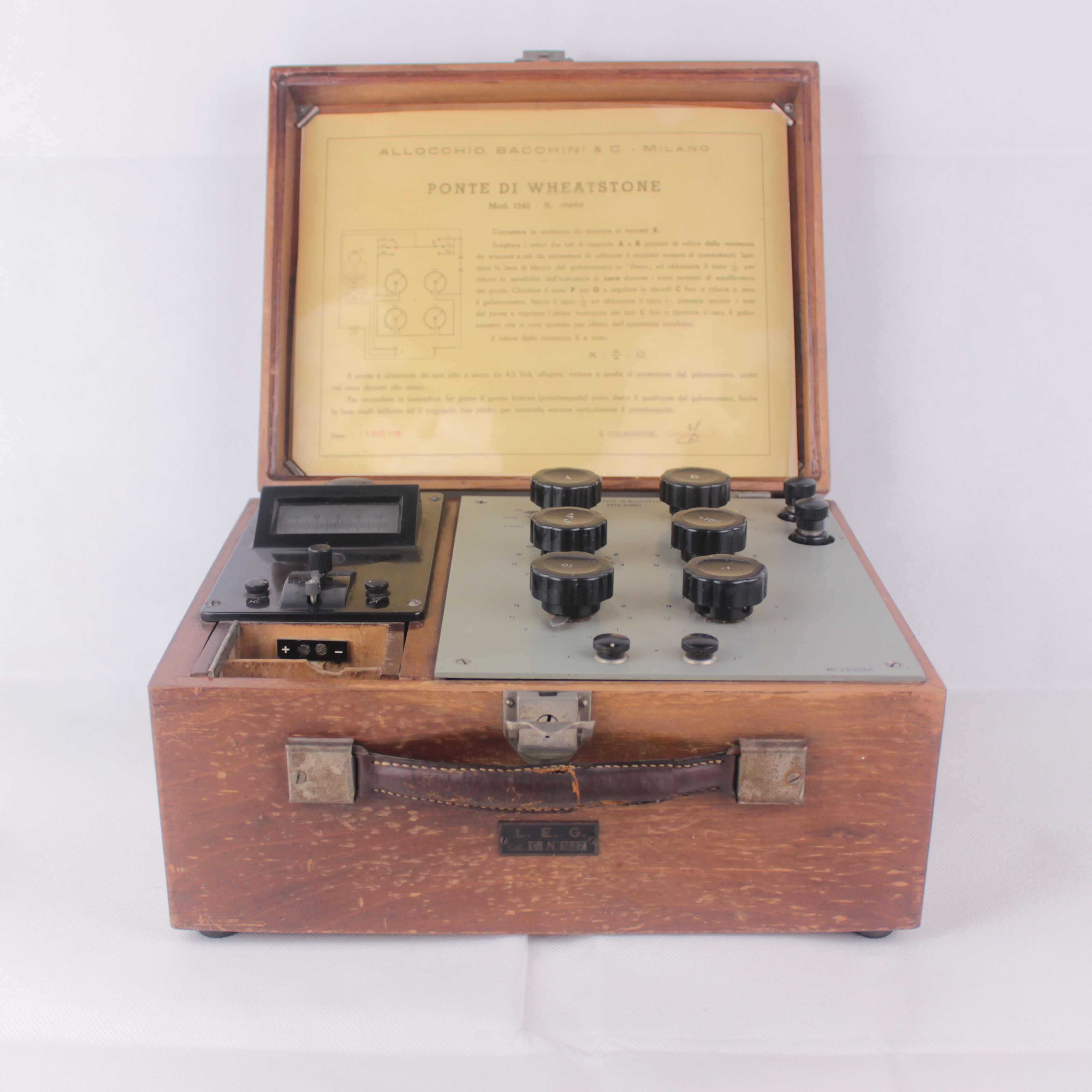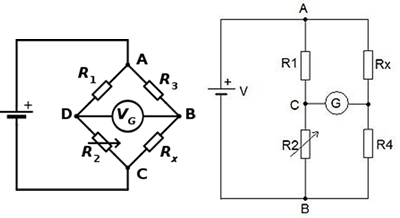
The Wheatstone bridge is an electric device invented by Samuel Hunter Christienel 1833 and perfected by Charles Wheatstone in the same year to measure electrical resistance.
Insights
The Wheatstone bridge consists of a voltage generator which feeds two resistive branches placed in parallel. The first is composed of a sample resistor - a type of electrical component intended for opposing a specific electric resistance to the passage of electric current - in series with a box of high precision resistors (variable resistance through suitable knobs). The second branch, instead, is composed of a standard resistor in series with the unknown resistance. Between the two resistors of the first branch and the two of the second branch is a central zero galvanometer - a device that translates an electric current into a moment magnetic - is placed.
By powering the circuit, you will notice that the galvanometer signals the passage of an electrical current. The value of the resistance box is then varied until the galvanometer indicates that there is no current flowing. After that, the electrical resistance value of the unknown resistor can be calculated with a simple mathematical formula.
The galvanometer is an extremely delicate and expensive instrument that has the advantage of being extremely sensitive, being able to detect currents of the order of μA. You can replace it with a voltmeter, always at central zero, provided that the latter can detect voltages in the order of tenths of mV.
The galvanometer (or voltmeter) must be at central zero, as a simple scale instrument cannot measure negative values (reverse current or voltage with respect to the polarity of the instrument) and, in the in case of an imbalance of the opposite bridge with respect to the poles of the instrument, there would be the risk of irreparably damage it. The resistors box and the sample resistor can be replaced by a graduated potentiometer.
Funzionamento

R1 and R3 are resistors of fixed and known value, while the resistor R2 is variable. If the relationship of the two resistors of the known side (R2 / (R2 + R1)) is equal to the relationship of the others two resistors of the unknown side (Rx / (Rx + R3)), the difference in electrical potential between the two intermediate points will be zero, and therefore no electric current will
circulate between these two points. To carry out the measurement, the resistor R2 is varied until the equilibrium point is obtained, i.e. up to when the galvanometer will measure zero current flowing. The control of the zero current can be carried out with great precision using the galvanometer G. In as an alternative to the galvanometer it is possible to use a differential amplifier for instrumentation type INA217AIP.
The direction of the current, in an unbalanced condition, indicates whether R2 is too high or too low. The value of the generator electromotive force (E) is irrelevant for the determination of the value of the measure.
When the bridge is constructed so that R1 is equal to R3, Rx is equal to R2 only in equilibrium condition.
In the same way, in conditions of equilibrium, it is always true that:
Rx = (R2 x R3) : R1 If the values of the resistors R1, R2 and R3 are known with high precision, the value of Rx can be determined with similar precision.
Small changes in the value of Rx will break the balance and be clearly identified from the indication of the galvanometer. Alternatively, if the values of R1, R2 and R3 are known and R2 is not variable, the electric current which passes through the galvanometer can be used to calculate the value of Rx. This is a faster procedure than the one of bringing the electric current to zero by checking the measure reported by the instrument.
If R1 and R2 are replaced with a wire-wound potentiometer (with sliding contact), the bridge is called a wire bridge.
Technical Data Sheet
– Name of the asset: Wheatstone bridge
– Category: electric appliance
– Designer: Samuel Hunter Christie
– Year of production: 1833